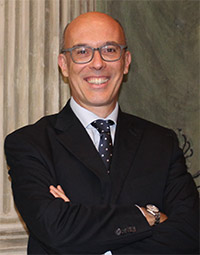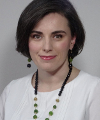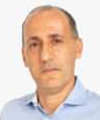Studying at the University of Verona
Here you can find information on the organisational aspects of the Programme, lecture timetables, learning activities and useful contact details for your time at the University, from enrolment to graduation.
Academic calendar
The academic calendar shows the deadlines and scheduled events that are relevant to students, teaching and technical-administrative staff of the University. Public holidays and University closures are also indicated. The academic year normally begins on 1 October each year and ends on 30 September of the following year.
Course calendar
The Academic Calendar sets out the degree programme lecture and exam timetables, as well as the relevant university closure dates..
| Period | From | To |
|---|---|---|
| I semestre | Oct 1, 2018 | Jan 31, 2019 |
| II semestre | Mar 4, 2019 | Jun 14, 2019 |
| Session | From | To |
|---|---|---|
| Sessione invernale d'esame | Feb 1, 2019 | Feb 28, 2019 |
| Sessione estiva d'esame | Jun 17, 2019 | Jul 31, 2019 |
| Sessione autunnale d'esame | Sep 2, 2019 | Sep 30, 2019 |
| Session | From | To |
|---|---|---|
| Sessione Estiva | Jul 17, 2019 | Jul 17, 2019 |
| Sessione Autunnale | Nov 20, 2019 | Nov 20, 2019 |
| Sessione Invernale | Mar 17, 2020 | Mar 17, 2020 |
| Period | From | To |
|---|---|---|
| Sospensione attività didattica | Nov 2, 2018 | Nov 3, 2018 |
| Vacanze di Natale | Dec 24, 2018 | Jan 6, 2019 |
| Vacanze di Pasqua | Apr 19, 2019 | Apr 28, 2019 |
| Festa del Santo Patrono | May 21, 2019 | May 21, 2019 |
| Vacanze estive | Aug 5, 2019 | Aug 18, 2019 |
Exam calendar
Exam dates and rounds are managed by the relevant Science and Engineering Teaching and Student Services Unit.
To view all the exam sessions available, please use the Exam dashboard on ESSE3.
If you forgot your login details or have problems logging in, please contact the relevant IT HelpDesk, or check the login details recovery web page.
Should you have any doubts or questions, please check the Enrollment FAQs
Academic staff
 mariacaterina.baruffi@univr.it
mariacaterina.baruffi@univr.it
 maurizio.boscaini@univr.it
maurizio.boscaini@univr.it
 rossana.capuani@univr.it
rossana.capuani@univr.it
 vittoria.cozza@univr.it
vittoria.cozza@univr.it
 chiara.nardon@univr.it
chiara.nardon@univr.it
 claudio.tomazzoli@univr.it
claudio.tomazzoli@univr.it
Study Plan
The Study Plan includes all modules, teaching and learning activities that each student will need to undertake during their time at the University.
Please select your Study Plan based on your enrollment year.
1° Year
| Modules | Credits | TAF | SSD |
|---|
2° Year activated in the A.Y. 2019/2020
| Modules | Credits | TAF | SSD |
|---|
1 module to be chosen among the following3° Year activated in the A.Y. 2020/2021
| Modules | Credits | TAF | SSD |
|---|
1 module to be chosen among the following| Modules | Credits | TAF | SSD |
|---|
| Modules | Credits | TAF | SSD |
|---|
1 module to be chosen among the following| Modules | Credits | TAF | SSD |
|---|
1 module to be chosen among the followingLegend | Type of training activity (TTA)
TAF (Type of Educational Activity) All courses and activities are classified into different types of educational activities, indicated by a letter.
Pattern recognition and Signal and image Processing in Bioinformatics (2020/2021)
The teaching is organized as follows:
SEGNALI E IMMAGINI I
Credits
6
Period
See the unit page
Academic staff
See the unit page
RICONOSCIMENTO E RECUPERO DELL'INFORMAZIONE PER BIOINFORMATICA
Credits
6
Period
See the unit page
Academic staff
See the unit page
Learning outcomes
The course aims at providing the students with the fundamentals of signal and image processing with emphasis on aspects that are relevant in the field of bioinformatics at both theoretical and practical levels. At the end of the course the students will be able to analyze the typical signal and image processing problems encountered in bioinformatics as well as to devise and implement suitable solutions grounding on the knowledge gained in the theory sessions and using the main available toolboxes.
Program
Please refer to the program of the two parts.
Bibliography
| Author | Title | Publishing house | Year | ISBN | Notes |
|---|---|---|---|---|---|
| Rafael C. Gonzalez and Richard E. Woods | Digital Image Processing (Edizione 4) | Prentice Hall College Div | 2017 | 0133356728 | |
| B.P. Lathi | Signal Processing and Linear Systems | Berkeley-Cambridge | 1998 | 0-941413-35-7 | |
| Alan C. Bovik | The Essential Guide to Image Processing (Edizione 2009) | Academic Press | 2009 | ISBN 9780080922515 |
Examination Methods
To pass the exam, the student must prove:
- the capability to clearly and concisely describe the different components of a Pattern Recognition System
- the capability to analise, understand and describe a Pattern Recognition system (or a given part of it) relative to a biological problem
- the ability to analyze the typical signal and image processing problems encountered in bioinformatics as well as to devise and implement suitable solutions grounding on the knowledge gained in the theory sessions and using the main available toolboxes;
- the ability to describe the concepts in a clear and exhaustive way;
- the ability to apply the acquired knowledge to solve application scenarios described by means of questions and exercises.
The exam of INFORMATION RETRIEVAL AND SIGNAL AND IMAGE PROCESSING FOR BIOINFORMATICS consists of two parts:
i) a written exam of INFORMATION RETRIEVAL containing questions on topics presented during the course (15 points available). The (i) written part is passed if the grade is greater or equal to 9;
ii) a written exam of SIGNAL AND IMAGE PROCESSING consisting in questions concerning the topics of both the theory and the laboratory sessions, with respective weight of 2/3 and 1/3, and one exercise (15 punti). In case the exam would be in teleconference mode the exam would be be in oral form.
The two parts of the exam can be passed separately: the final grade is the sum of the two grades.
The total exam is passed if each of the two grades is greater or equal to 9. Each evaluation is maintained valid for the whole academic year.
Type D and Type F activities
Modules not yet included
Career prospects
Module/Programme news
News for students
There you will find information, resources and services useful during your time at the University (Student’s exam record, your study plan on ESSE3, Distance Learning courses, university email account, office forms, administrative procedures, etc.). You can log into MyUnivr with your GIA login details: only in this way will you be able to receive notification of all the notices from your teachers and your secretariat via email and soon also via the Univr app.
Graduation
List of theses and work experience proposals
| Stage | Research area |
|---|---|
| Correlated mutations | Various topics |
Attendance
As stated in the Teaching Regulations for the A.Y. 2022/2023, attendance at the course of study is not mandatory.

 045 802 7823
045 802 7823




































